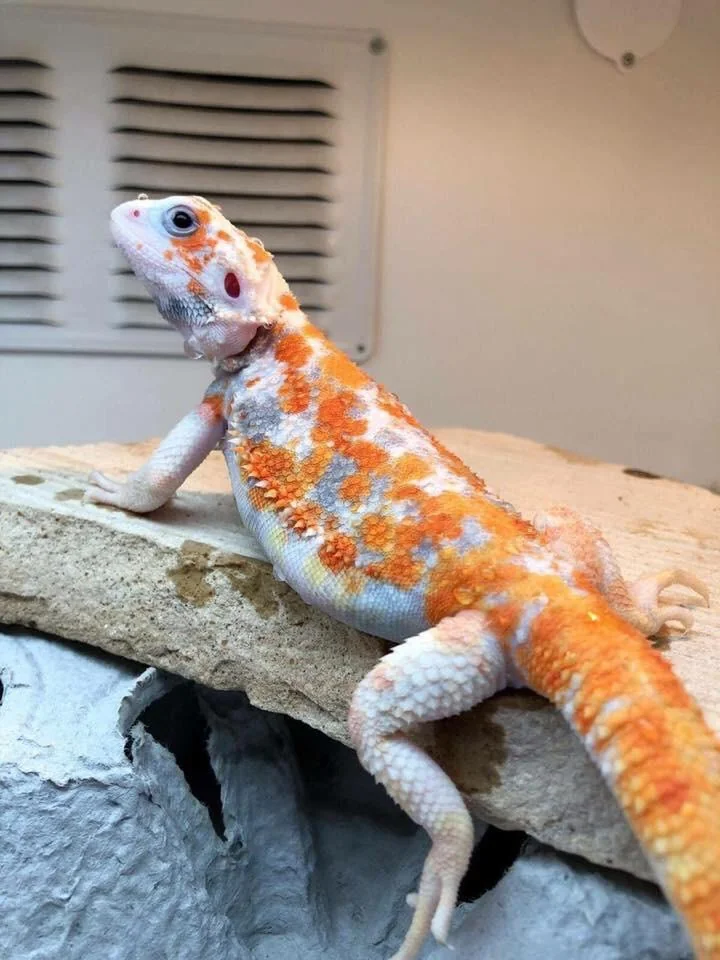
Description:
Scientific name: Pogona vitticeps
Life span: 8-12 years
The Paradox dragon is unique because of the way it looks. Yet, Paradox dragons’ appearances aren’t uniform, which is what makes them paradoxical. There is no observable pattern in them. The majority of them have noticeable color splotches that stand out and are highly distinctive.
Native Region/Habitat
Paradox A species of bearded dragon that is indigenous to Australia’s Northern Territory is called a bearded dragon.
Behavior:
The majority of Paradox dragons are amiable and submissive, like all bearded dragons.
Because they are more aggressive towards intruders, paradox bearded dragons frequently attack other creatures. They do not enjoy being touched, and when picked up, they frequently bite their owners.
Care As a pet/In captivity:

Habitat, Tank Conditions & Setup
Tank: A larger tank is advised, but a 75-gallon one would do for an adult bearded dragon. One of the most common options is glass aquariums with screen lids. You must supply your dragon with many hiding spots within, such as logs and rocks. You must take your dragon out of its enclosure once a month so that you can clean it with a bleach solution and disinfect it.
Lighting: Every day, bearded dragons require 12 to 14 hours of light. To keep your dragon healthy, make sure to select a reptile bulb that emits both UVA and UVB light.
Heating (Temperature & Humidity): To be able to control their body temperature, dragons require a rather pronounced temperature differential. A basking area at one end of the tank should be heated to a temperature of between 95 and 110 degrees. A temperature of between 75 and 85 degrees should be maintained at the other end of the enclosure. Low 70s degrees can be reached at night without causing any problems. The heat lamp’s evaporation of water should easily maintain the humidity levels in your dragon’s enclosure at roughly 30% to 50%.
Feeding: Even though a bearded dragon constantly consumes the same kinds of foods, its diet changes throughout the course of its lifetime. Your dragon will consume a variety of plant materials, such as fruits, grasses, flowers, vegetables, weeds, and more, in addition to insects. Crickets, earthworms, waxworms, roaches, mealworms, and other similar insects are common insect feeders.
Table





